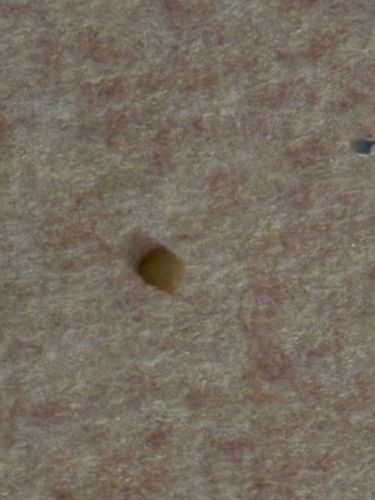Carpet Beetle Larva
Scientific Name: There are several species of carpet beetles, including Anthrenus scrophulariae (Common Carpet Beetle), Attagenus unicolor (Black Carpet Beetle), and Trogoderma variabile (Warehouse Beetle). Without a clearer image, a specific scientific name cannot be provided, but it belongs to the family Dermestidae.
Order & Family: Coleoptera, Dermestidae
Size: Larvae typically range from 2mm to 5mm (0.08 to 0.2 inches) in length, depending on the species and developmental stage. They are often covered in bristles.

Natural Habitat
Indoors, carpet beetle larvae are found in dark, undisturbed areas where food sources are available, such as under carpets, rugs, furniture, in closets, pantries, and attics. They infest stored foods, animal products, and natural fiber textiles.
Diet & Feeding
The larvae primarily feed on animal-based products such as wool, silk, feathers, leather, fur, pet hair, and dried animal remains. They can also consume plant-based materials like cotton, linen, and synthetic fibers if they contain food stains or are mixed with natural fibers. Adults feed on pollen and nectar outdoors.
Behavior Patterns
Carpet beetle larvae typically avoid light and prefer dark, undisturbed areas. They are slow-moving and often found in crevices or under furniture. The larvae are the destructive stage, feeding on natural fibers, while adult carpet beetles generally feed on pollen and nectar and are active fliers.
Risks & Benefits
Potential risks include significant damage to natural fiber clothing, carpets, upholstered furniture, and stored food items, leading to financial loss. They can also cause skin irritation or allergic reactions in sensitive individuals due to their bristly hairs. There are no known benefits.
Identified on: 9/4/2025